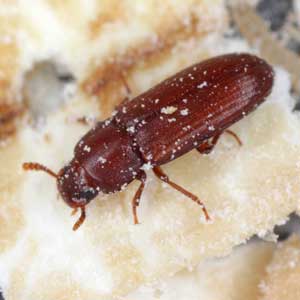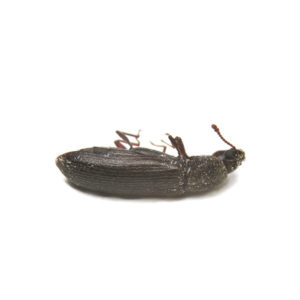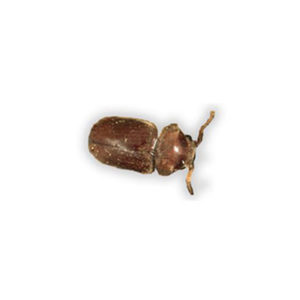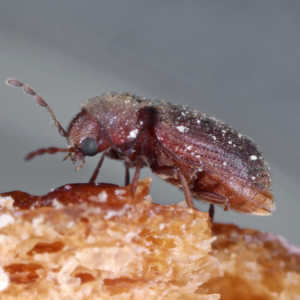Red Flour Beetles in North Carolina
A number of beetles infest flour and grain-based products and are known as flour beetles. The most economically important pests of this species are the red flour beetle and the confused flour beetle. Red and confused flour beetles attack stored grain products such as flour, cereals, spices, pasta, cake mix, dried flowers, and even dried museum specimens. The red flour beetle is essentially an insect of warmer climates and can fly short distances. Flour beetles feed on grain dust and milled cereals, but are unable to attack sound and undamaged grain.
Because there are many different types of beetles in North Carolina, they can be difficult to distinguish, however our common beetle species can help with this.
Red Flour Beetle Habitat
Red flour beetles are capable of breeding throughout the year where the building is warmed during winter. Flour beetles can be found not only inside infested grain products but in cracks and crevices where grain may have spilled. Flour beetles infest cereal, cake mix, cornmeal, crackers, dry pet food, chocolate and nuts, and seeds (such as birdseed). Both adults and small, off-white larvae will be fouxnd in infested items. The adult beetles often wander away from the infested material and can be found inside pantries and cupboards or anywhere in the home.
Red Flour Beetle Behaviors, Threats, or Dangers
The red flour beetle does not bite or sting but may elicit an allergic response. Although it does not spread disease, large numbers of dead bodies, cast skins, and fecal pellets can produce extremely pungent odors in grain. Common signs of an infestation are visual sightings of actual beetles crawling or flying throughout the home, seeing them in flour or cereal products, and “leaky packages.” Small bits of meal or grain spilling from a package, or small holes chewed through packaging, are signs that an infestation is present. Contact your local pantry pest control experts for help with red flour beetle problems.
How to Get Rid of Red Flour Beetles?
To get rid of Red Flour Beetles, discard infested items, clean storage areas thoroughly, and use insecticides if necessary. Freeze lightly infested items to kill beetles and prevent re-infestation. Store remaining dry goods in airtight containers. Monitor regularly for signs of pests and maintain cleanliness to prevent future infestations. Consider our professional pest control experts for severe cases.
Need help with Red Flour Beetle control?
Frequently Asked Questions
What Do Red Flour Bugs Look Like?
Red Flour Beetles are small, reddish-brown insects with elongated bodies. They measure about 2 to 4 millimeters in length as adults. These beetles have flattened bodies and antennae that gradually enlarge towards the tips. They are often confused with another similar species called the confused flour beetle (Tribolium confusum), which has antennae with four club-like segments whereas red flour beetles have antennae with three.
Where Do Red Flour Bugs Come From?
Red Flour Beetles typically infest stored food products such as flour, cereal, rice, grains, dried fruits, nuts, and pet food. They can enter homes and food storage areas through contaminated food products purchased from stores or via infested packaging. Once inside, they can multiply quickly under favorable conditions, leading to infestations.
How to Prevent Bugs in Flour?
To prevent bugs in flour and other stored food products, consider the following measures:
- Proper storage: Store flour and other dry goods in airtight containers made of glass, plastic, or metal to prevent access by pests.
- Regular inspection: Check stored food products regularly for signs of infestation, such as holes in packaging, webbing, or presence of live insects.
- Temperature control: Keep storage areas cool and dry, as high temperatures and humidity can promote insect activity.
- Use of bay leaves or cloves: Placing bay leaves or whole cloves in containers of flour can act as natural repellents for some types of pantry pests, although their effectiveness may vary.
- Freezing: If you suspect that flour or other dry goods are infested, you can freeze them for several days to kill any eggs or insects present before transferring them to airtight containers for storage.
- Rotate stock: Use older food items first and avoid keeping large quantities of flour or grains for extended periods, as this reduces the likelihood of infestations.





